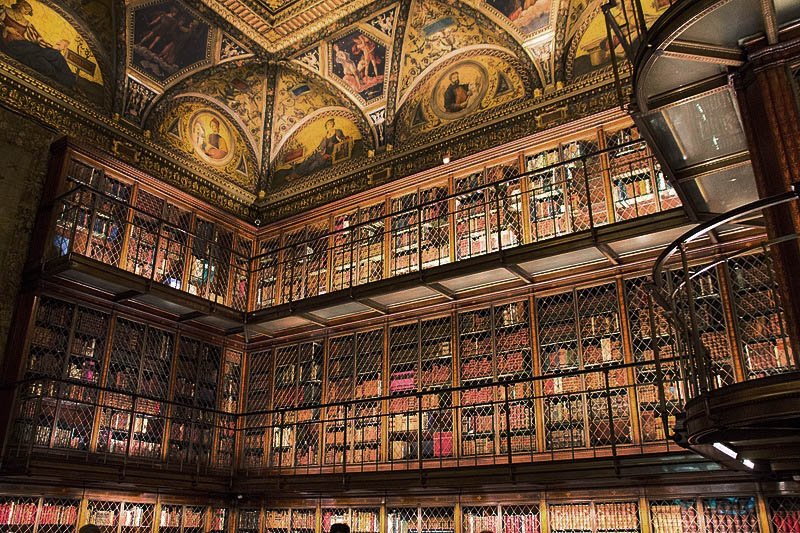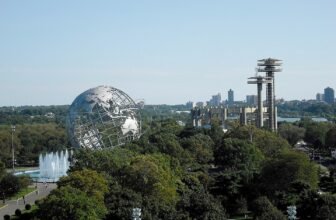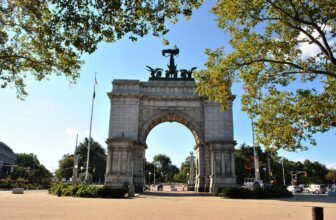
Is the Morgan Library Worth It? Unveiling the Literary Treasure of New York
If you’re wandering through Midtown Manhattan, past the thunderous hum of Madison Avenue, you might just stumble upon one of New York City’s best-kept secrets, a place that feels like a portal to another time. Nestled between steel skyscrapers and urban buzz is a sanctuary of art, literature, and history: the Morgan Library & Museum.
For bibliophiles, art lovers, or anyone who’s ever fallen in love with a story, this institution is more than worth it. It’s a reverent celebration of human imagination, tucked inside an opulent marble-and-mortar time capsule. But what makes the Morgan Library so special? Let’s open the gilded doors and turn back the pages of time.
A Banker’s Dream: The Origins of the Morgan Library
To understand the Morgan Library, one must first understand the man behind it: John Pierpont Morgan, better known as J.P. Morgan, the titan of American finance. At the turn of the 20th century, Morgan was not only orchestrating vast corporate mergers and saving the U.S. economy, he was also amassing a private collection of rare manuscripts, books, artworks, and historical documents so staggering in breadth that it rivaled those of European monarchs.
But Morgan wasn’t hoarding these treasures in some dark vault. He had a vision: to create a temple of culture, a place where beauty, wisdom, and human achievement could be preserved and admired. And so, in 1906, he commissioned the architect Charles Follen McKim, of the prestigious firm McKim, Mead & White, to build a private library next to his home.
The result? A Renaissance-style palazzo that seems plucked from the streets of Florence or Rome. Inside, you’ll find majestic rooms lined with triple-tiered walnut bookcases, ceiling murals glittering with gold leaf, and secret staircases winding through the walls. It’s not just a library, it’s an experience.
The Morgan Library Today: A Cultural Beacon
So, is it worth visiting?
Absolutely. The Morgan Library & Museum has grown from Morgan’s private collection into a world-renowned public institution. It’s part museum, part research library, and wholly a testament to the enduring power of the written word.
Today, the complex includes the original library, Morgan’s study, and a modern expansion designed by Renzo Piano that adds light-filled galleries, a concert hall, café, and more. It’s a fusion of old-world elegance and contemporary sophistication.
Whether you’re marveling at an illuminated medieval manuscript, attending a literary lecture, or sipping a cappuccino in the sun-drenched courtyard, the Morgan offers an oasis of culture in the middle of the city’s chaos.
What’s Special About the Morgan Library?
Let’s dive into what makes the Morgan truly extraordinary:
1. Unrivaled Book and Manuscript Collection
The Morgan is a sanctuary for literary artifacts. Its collection includes:
-
One of the only surviving copies of the Gutenberg Bible, the first book printed with movable type in Europe.
-
Original manuscripts by literary giants like Charles Dickens, Jane Austen, and Mark Twain.
-
Medieval and Renaissance illuminated manuscripts, some of them over 1,000 years old.
-
Scores and drafts by classical composers like Beethoven, Mozart, and Bach.
-
Religious and historical texts that span centuries, from Mesopotamian cuneiform tablets to ancient Egyptian papyri.
2. Pierpont Morgan’s Study
Step into Morgan’s study, and you’ll feel like you’ve stepped onto the set of a period drama. The room is a study in extravagance, coffered ceilings, a fireplace carved from pink marble, tapestries, and walls lined with rare bindings. This was where Morgan conducted his business, wrote his letters, and entertained intellectuals and statesmen. It’s awe-inspiring and deeply personal, revealing the mind of a man who believed in beauty as a form of power.
3. Exhibitions and Programs
The Morgan isn’t just about looking at old books under glass. It’s alive with rotating exhibitions that explore themes from contemporary art to Shakespeare’s influence on film. There are lectures, film screenings, and live music performances that breathe new life into the collection. The Morgan is a place where the past and present speak to each other.
What Famous Books Are in the Morgan Library?
Let’s talk treasure. The Morgan Library’s vaults hold some of the most iconic texts in the literary world. Here are a few of the crown jewels:
🕮 The Gutenberg Bible (c. 1455)
One of only 48 known copies in existence. Seeing it in person is a rare encounter with the dawn of the printed word.
🕮 A Charles Dickens Manuscript
You can see the original handwritten manuscript of A Christmas Carol, complete with Dickens’s notes and edits, revealing the raw creative process of one of literature’s most beloved authors.
🕮 Jane Austen’s Juvenilia
Before she was the queen of English literature, a teenage Austen penned witty stories and sketches, some of which are preserved here.
🕮 The Lindau Gospels
An illuminated manuscript that dates back to the 9th century, adorned with a jewel-encrusted cover, it’s as much a religious object as a work of art.
🕮 John Milton’s Paradise Lost Manuscript
Rarely seen, but occasionally exhibited, this manuscript shows Milton’s epic poem in its earlier, evolving stages.
🕮 Scores by Mozart and Beethoven
Imagine standing inches away from music composed by hand, blots of ink, scribbled corrections, notes born from genius.
These are just the tip of the iceberg. The Morgan’s collection spans centuries and civilizations. Every item tells a story, and collectively, they chronicle the evolution of human thought.
Can You Read the Books at the Morgan Library?
Here’s where things get nuanced.
You can’t walk in, grab a Gutenberg Bible, and flip through it while sipping a latte (understandably!). The rarest items are preserved in climate-controlled environments and displayed behind protective glass.
However, researchers and scholars can apply for access to materials in the Morgan’s Reading Room, which functions as a serious research library. If you’re working on a doctoral thesis about medieval manuscripts or writing a book on Dickens, you might just get the chance to touch history.
For the general public, the Morgan provides high-resolution digital facsimiles of many items, and curators often design interactive exhibits that allow visitors to virtually explore books page-by-page. So while you can’t read everything hands-on, you can experience the books in deeply enriching ways.
Who Owned the Morgan Library?
As mentioned earlier, the Morgan Library began as the private collection of J.P. Morgan. He was a voracious collector, and his tastes were global: Egyptian antiquities, Roman coins, Persian miniatures, European paintings, and, most famously, books.
After Morgan’s death in 1913, his son, J.P. Morgan Jr., inherited the library and chose to make it accessible to the public. In 1924, he transformed the private collection into a public institution, endowing it with funds and setting the stage for its evolution into the Morgan Library & Museum we know today.
This gesture of generosity preserved not just a legacy of wealth, but of knowledge, beauty, and curiosity, a museum built not just on capital, but on culture.
Who Was the Original Librarian of the Morgan Library?
The role of the original librarian at the Morgan Library was crucial, and that honor goes to Belle da Costa Greene.
Greene was no ordinary librarian. Hired by Morgan himself in 1905, she quickly became his trusted advisor, acquiring manuscripts and rare books on his behalf. She was brilliant, poised, and stylish, often making headlines for her flamboyant fashion as much as for her scholarly acumen.
What made Greene’s story even more remarkable was her hidden identity: she was a Black woman passing as white in an era of deep racial prejudice. Born Belle Marion Greener, she changed her name to obscure her African American heritage and navigated elite circles with daring and finesse.
Greene not only curated Morgan’s collection but shaped it. After his death, she served as the library’s first director and remained at the helm for over four decades. Her legacy is inseparable from the institution’s soul.
How Big is the Morgan Library and Museum?
You might expect a library to be a quiet, modest affair. Not the Morgan.
The Morgan complex now spans 75,000 square feet and includes multiple buildings, galleries, performance spaces, and archival facilities. The 2006 expansion by Renzo Piano added a modern edge, seamlessly blending the historic interiors with state-of-the-art design.
Here’s a breakdown of the spaces:
-
McKim Building: The original library, with the East Room (the main library), the Rotunda, and Morgan’s study.
-
Annexes: Including Morgan Jr.’s brownstone residence and former staff quarters.
-
Galleries: Multiple modern galleries for rotating exhibitions, art shows, and manuscript displays.
-
Morgan Garden: A peaceful spot for contemplation.
-
Performance Hall: Hosting concerts, talks, and more.
Despite its size, the Morgan never feels overwhelming. It’s intimate, curated, and deeply human in scale, a place to get lost in wonder without getting lost in the crowd.
Is the Morgan Library Worth It
A thousand times, yes.
Whether you’re a casual tourist or a lifelong lover of literature, the Morgan Library & Museum offers an unparalleled experience. It’s a place where Shakespeare shares space with Hemingway, where ancient texts whisper beside modern art, and where the ambitions of a 20th-century financier birthed a haven for eternal ideas.
So the next time you’re in New York, don’t just walk past that unassuming entrance on Madison Avenue. Step inside. Breathe in the scent of old paper and polished wood. Gaze up at ceilings gilded with dreams. Let the stories pull you in.
After all, the best books don’t just live on shelves, they live in places like the Morgan.





